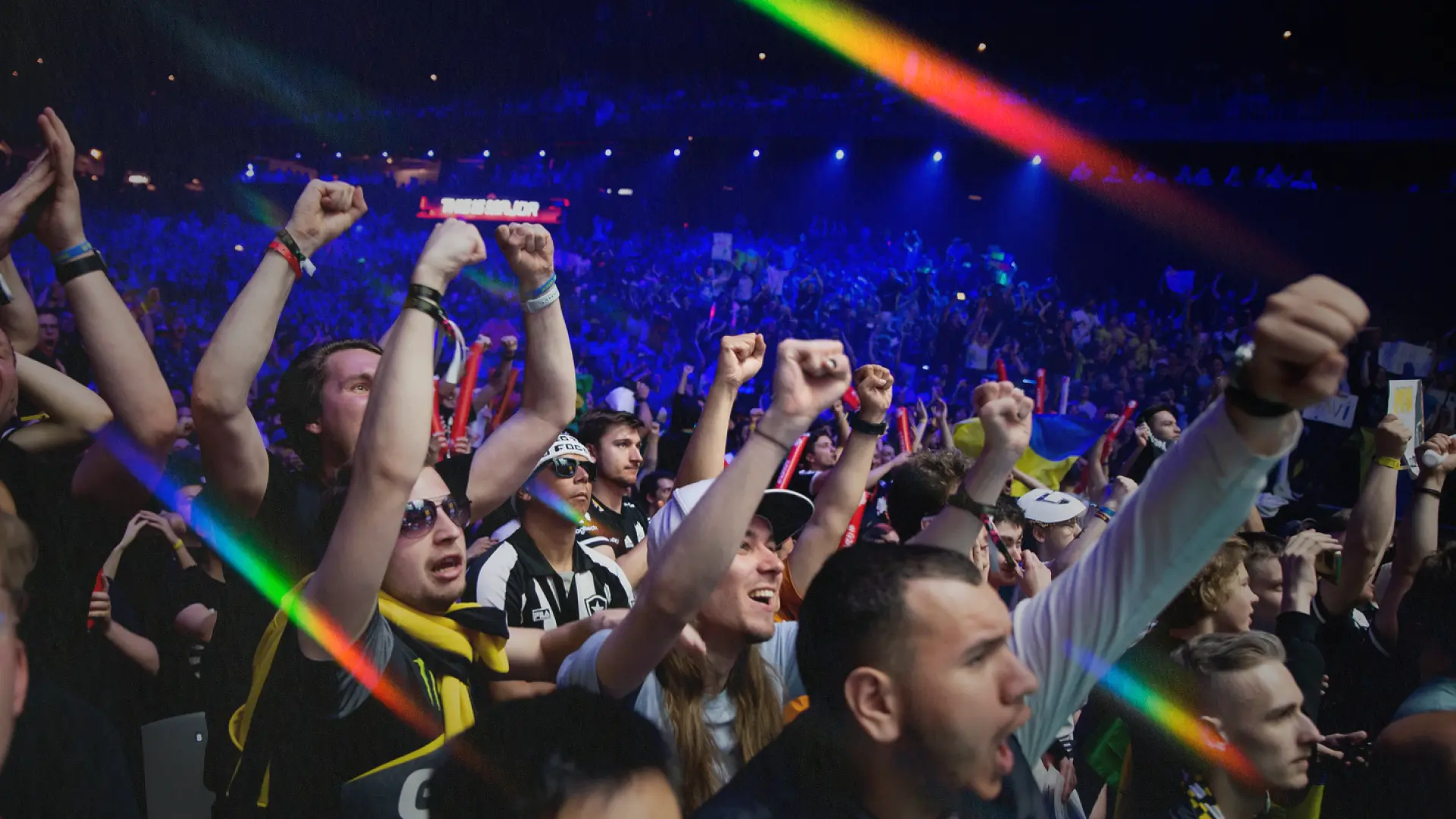The esports winter hit hard. Viewership stagnated, sponsors pulled out, and unsustainable growth models collapsed like dominoes.
Betting operators felt it just as badly. Cracking the esports code seemed impossible. We witnessed companies folding across the ecosystem: teams shuttering operations, brands retreating from markets they'd aggressively entered just months before, rights holders scrambling to salvage partnerships.
What we're seeing now isn't recovery. It's evolution.
The Trough of Sorrow Was Always Coming
The first wave of esports followed a predictable curve: early promise, explosive growth, overhype, then sobering correction.
Most teams relied almost exclusively on sponsorships and prize pools. Business models were narrow, fragile, and dependent on outside capital. Entire organisations were valued like tech startups but run like sports clubs without stable revenue streams.
The correction was inevitable. The question was who would adapt and who would exit.

The winter exposed which players were serious and which were just chasing hype.
Brands Stopped Guessing, Started Measuring
Gone are the days of throwing money at partnerships without understanding audience behaviour, tournament structures, or what actually drives engagement in competitive gaming.
Brands now demand transparent data on actual reach, engagement quality, and conversion potential. The ones who made it through stopped relying on vanity metrics.
They started asking harder questions about where their money was going and what they were getting back.
The New Brand Playbook:
- Multi-modal tracking: Visual, audible, and legible brand exposures across all platforms
- Real-time analytics: Insights delivered in hours, not weeks
- Demographic precision: Age, gender, income, and interest data for targeted activations
- ROI transparency: Monetary valuation of each sponsorship element
Betting operators who survived understood this shift. They stopped treating esports like traditional sports with a digital coat of paint.
Rights Holders Built Infrastructure That Actually Matters
Better infrastructure exists now. Bodies like ESIC (Esports Integrity Commission) are bridging integrity gaps with proper legal backing.
The landscape is shifting in ways that favour those who stayed committed. New developments are creating fresh opportunities: team mergers, the Esports World Cup launching in 2024, and the upcoming Esports Nations Cup in 2026.
Major tournaments became proving grounds for new sponsorship models and audience engagement strategies that didn't exist before the winter forced everyone to rethink their approach.
The Esports World Cup 2024 drew unprecedented mainstream attention, proving that the right format and investment can still capture massive audiences.
But it also demonstrated that success requires more than just prize money. It requires understanding what modern esports audiences actually want.
Teams Became Media-Tech Companies
The mistake of the first wave was believing sponsorships and prize pools were enough. They aren't.
The next generation of esports teams act less like fragile sports clubs and more like media-tech companies with multiple revenue lines.
Teams that survived treat esports as entertainment IP and digital community, not just competition.
The fundamentals haven't changed. Digital natives are growing up. Global connectivity is improving. The technology keeps getting better.
The global esports market is still projected to grow, just at more realistic rates than the explosive growth of the 2010s.
The Data Behind the Survivors
The operators who survived the esports winter understood one thing: audience behaviour shifted during the correction.
Mobile engagement became the primary touchpoint. Demographic precision replaced broad-brush targeting. Data-driven partnerships delivered measurable results whilst gut-feeling investments collapsed.
They stopped trying to replicate traditional sports models and started building something that actually fits how esports audiences engage.
Short-term revenue took a hit. Some questioned whether betting and esports could coexist sustainably.
The ones who made it through aren't interested in quick cash anymore. They're building for the long game.
The Reconciliation Phase
What we're witnessing isn't about flooding the market with new players. It's about established ones who weathered the storm now having clearer pathways and better market understanding.
The survivors learned what the opportunists couldn't grasp: esports requires commitment, not speculation.
This regulatory maturity is crucial for sustainable growth. When fans know that advertising and product practices are within legal limits and ethical boundaries, it builds trust and loyalty.
Three Pillars of Post-Winter Success:
- Data-Driven Decisions: Partnerships built on measurable outcomes, not assumptions
- Audience-First Approach: Understanding engagement patterns, not just viewership peaks
- Long-Term Sustainability: Revenue models that don't rely on perpetual growth
The industry is trading short-term opportunism for long-term sustainability.
Innovation Without Abandonment
Better grassroots development. Sustainable business models. Building genuine fan loyalty rather than chasing viewership numbers that don't translate to revenue.
The operators who survived understood this. They stopped trying to chase every trend and started perfecting what actually works.
But innovation remains crucial. You can't rely on traditional formats when targeting digitally native esports audiences who expect constant evolution.
The key is understanding that esports audiences aren't just traditional sports fans who happen to like gaming. They're fundamentally different with different expectations around innovation and digital experiences.
Products that don't evolve get left behind.
What Spring Looks Like
The esports winter is ending. The survivors know what comes next.
It looks like operators who understand the difference between peak viewership and engaged audiences. It looks like partnerships built on data, not guesswork. It looks like sustainable revenue models that don't depend on endless growth cycles.
Most importantly, it looks like an industry that learned from its mistakes instead of repeating them.
The New Ecosystem:
- Brands: Data-first sponsorship strategies with measurable ROI
- Rights Holders: Sustainable tournament structures with multiple revenue streams
- Teams: Media-tech companies with diversified income sources
- Operators: Long-term partnerships based on audience understanding
The companies that folded during the esports winter weren't wrong to enter the market. They were wrong about how to operate in it.
The survivors get it now. They had to learn the hard way, but they learned.
The esports winter taught us that pinnacle events are crucial for mainstream spotlight, but real growth happens through smaller, strategic steps.
The betting operators who made it through aren't the biggest or the loudest. They're the ones who stayed when it got cold, adapted when it got hard, and built when everyone else was running.
Winter cleared the field. Spring belongs to those who used the cold to grow stronger.

Get new insights straight to your inbox
Don’t miss out on the insights that the press and media rave about!






